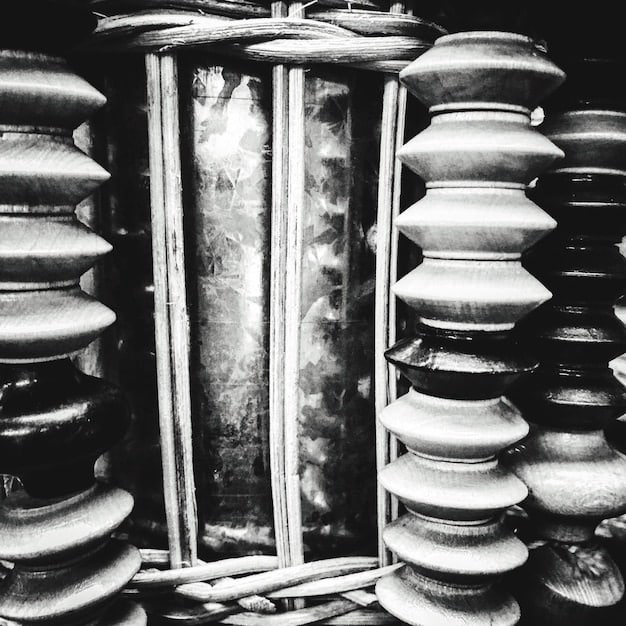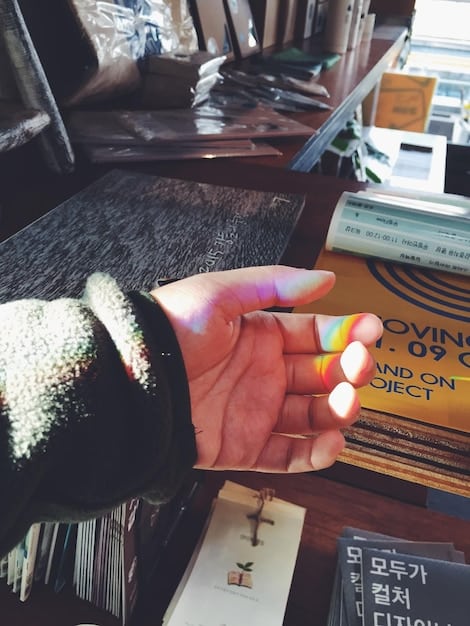Manga Release Guide: Spot First Editions & Maximize Value

A Manga Release Guide provides collectors with the knowledge to identify first edition prints and implement strategies to maximize the value of their manga collection, offering insights into key identifiers and preservation techniques.
Are you a manga collector looking to increase the value of your collection? This Manga Release Guide: How to Spot First Edition Prints and Maximize Your Collection’s Value provides the insights and strategies you need to identify first edition prints, understand the nuances of manga collecting, and ultimately enhance the worth of your prized possessions.
Understanding Manga Editions and Printings
Understanding the difference between manga editions and printings is crucial for any serious collector. Editions refer to distinct versions of a manga, while printings indicate specific production runs within the same edition.
Distinguishing between these can significantly impact the value of your manga.
What is a Manga Edition?
The edition of a manga refers to a specific version that has unique characteristics, such as changes in content, format, or cover design. Different editions may also reflect significant milestones in the manga’s publication history.
What is a Manga Printing?
A printing refers to a specific run of copies produced from the same edition. Identifying the printing number is key to spotting first editions and understanding the value of your manga.
Identifying features of editions and printings:
- Check the publisher’s information page.
- Look for edition and printing numbers.
- Compare different copies for variations.
Understanding these differences is essential to accurately identify first edition prints and assess the value of your manga collection.
Key Identifiers of First Edition Manga
Identifying a first edition manga involves looking for specific identifiers that distinguish it from later printings. These identifiers can vary depending on the publisher and the series. However, some common traits can help collectors identify valuable first editions.
Let’s explore these identifiers in detail.

Copyright Page Information
The copyright page, usually found at the beginning or end of the manga, contains vital information about the printing history. Look for statements indicating “First Edition” or “First Printing.” The absence of such a statement, or the presence of a higher printing number, suggests it is not a first edition.
Printing Number Lines
Many publishers use printing number lines to indicate the printing number. A number line that includes the number “1” indicates a first printing. For example, a number line that reads “1 2 3 4 5” confirms that the manga is a first edition.
Cover and Dust Jacket Variations
First editions often have unique cover designs or dust jackets that differ from later printings. Pay attention to colors, logos, and any added elements, as these can change over time. Comparing your copy with known first edition covers can help confirm its authenticity.
Key identifiers to easily spot first editions:
- Copyright page details on printing and publication.
- Number lines to identify the printing number.
- Cover and dust jacket design and variations.
By meticulously examining these identifiers, collectors can accurately identify first editions and make informed decisions about their acquisitions.
The Role of Publishers in Identifying First Editions
Different publishers have varying methods for indicating first editions, making it crucial for collectors to understand these nuances. Knowing the publishing standards of major manga publishers can greatly assist in identifying genuine first prints.
Each publisher has their own distinct features.
Viz Media
Viz Media, one of the largest manga publishers in North America, typically indicates first editions through a printing number line on the copyright page. The presence of the number “1” in the line denotes a first printing.
Dark Horse Comics
Dark Horse Comics often uses a combination of copyright page statements and number lines to identify first editions. Collectors should look for both indicators to confirm the edition’s status.
Kodansha Comics
Kodansha Comics, a prominent publisher of Japanese manga, usually includes a statement on the copyright page explicitly mentioning “First Edition.” Absence of this statement suggests it is a later printing.
Here’s a quick comparison:
- Viz Media: Uses printing number lines with “1” indicating the first print.
- Dark Horse Comics: Combines copyright page statements and number lines.
- Kodansha Comics: Includes a clear “First Edition” statement.
Understanding the specific identifiers used by different publishers can significantly aid collectors in accurately identifying first edition manga and assessing their value.
Factors Influencing the Value of Manga
Several factors can influence the value of a manga, including its condition, rarity, popularity, and historical significance. These factors collectively determine the demand and desirability of a particular manga in the collector’s market.
Let’s consider each of these factors.
Condition
The condition of a manga is paramount in determining its value. Manga in near-mint or excellent condition command higher prices. Collectors should look for signs of wear such as creases, folds, tears, and yellowing. Proper storage and handling can help maintain the condition of your manga.
Rarity
Rarity plays a significant role in determining a manga’s value. First editions, limited editions, and out-of-print volumes are often more valuable due to their scarcity. Identifying and preserving rare manga can significantly enhance your collection’s worth.
Popularity and Demand
The popularity of a manga series and its demand among collectors can greatly impact its value. Highly sought-after titles and influential works often fetch higher prices. Staying informed about current trends and collector preferences can help you make strategic acquisitions.

Factors that determine manga values:
- Condition: Keep manga in great shape to maximize value.
- Rarity: First editions and limited prints are usually more valuable.
- Demand: Manga of current series are often much sought after.
By considering these factors, collectors can make informed decisions about their acquisitions and potentially increase the value of their manga collections.
Manga Grading and Authentication
Manga grading and authentication services provide collectors with an objective assessment of a manga’s condition and authenticity. These services help establish trust and confidence in the collector’s market by providing standardized evaluations.
Let’s consider several things to consider.
The Importance of Professional Grading
Professional grading involves having a manga evaluated by experts who assess its condition based on established criteria. Graded manga often come with a certification that verifies its condition and authenticity, enhancing its marketability.
Popular Grading Services
Several reputable grading services specialize in evaluating comics and manga. These services employ trained professionals who use standardized grading scales to assess the condition of each item. Researching and selecting a trusted grading service is essential.
The Authentication Process
Authentication involves verifying the legitimacy of a manga, ensuring it is not a counterfeit or reproduction. Authenticators examine various details, such as printing quality, paper type, and binding techniques, to confirm the manga’s authenticity.
Key steps in authenticating manga:
- Professional Grading: Use professional graders who assesses condition.
- Grading Services: Confirm the series and editions from experts.
- Authentication: Ensure the manga is not counterfeit.
Leveraging manga grading and authentication services provides collectors with valuable insights and safeguards their investments in the collector’s market.
Preserving Your Manga Collection
Proper storage and preservation techniques are essential to maintain the condition and value of your manga collection. Protecting your manga from environmental factors and physical damage can significantly extend their lifespan.
These tips will lead to optimal storage.
Optimal Storage Conditions
Store your manga in a cool, dry place away from direct sunlight and humidity. Exposure to these elements can cause fading, yellowing, and warping. Using acid-free backing boards and protective sleeves can further safeguard your manga from damage.
Handling Techniques
Handle your manga with clean, dry hands to prevent the transfer of oils and dirt. Avoid bending or folding the covers, and use bookmarks to avoid creasing the pages. When transporting your manga, use protective boxes or bags to prevent damage.
Regular Maintenance
Regularly inspect your manga for signs of damage and address any issues promptly. Gently clean the covers with a soft, dry cloth to remove dust and debris. Consider using a dehumidifier in storage areas to maintain optimal humidity levels.
Effective preservation requires consideration of:
- Storage: Keep manga away from sunlight and humidity.
- Handling: Use clean, dry hands and protective covers.
- Maintenance: Inspect and clean manga regularly.
By implementing these preservation techniques, collectors can ensure their manga collection remains in pristine condition, preserving its value for years to come.
| Key Point | Brief Description |
|---|---|
| 🔍 Identify Editions | Understand the difference between editions and unique printings. |
| ✅ First Edition Traits | Look for number lines, first edition labels, and copyright information. |
| 💰 Affecting Value | Condition, rarity, and popularity collectively increase a manga’s worth. |
| 🛡️ Preserve Your Manga | Use suitable storage and handling as well preserving your manga. |
Frequently Asked Questions
▼
A first edition refers to the initial publication of a manga, while a first printing is the first run of copies produced from that edition. They are often used interchangeably, but knowing the subtleties can help collectors.
▼
The publishing information, including the edition and printing details, is typically found on the copyright page, which is usually located at the beginning or end of the manga.
▼
The condition of a manga significantly impacts its value. Manga in near-mint or excellent condition command higher prices, while those with wear and tear have lower values.
▼
Yes, publishers like Kodansha Comics often include a clear “First Edition” statement, while Viz Media uses printing number lines to indicate first printings, making them easily identifiable by collectors.
▼
To preserve your manga, store them in a cool, dry place away from direct sunlight, handle them with clean hands, and use protective sleeves. Also, regularly inspect them for signs of damage.
Conclusion
In conclusion, mastering the art of identifying first edition manga and employing effective preservation strategies can significantly enhance the value and longevity of your collection. By understanding the nuances of editions, printings, and publisher-specific identifiers, collectors can make informed decisions and safeguard their investments in the collector’s market. Happy collecting!





